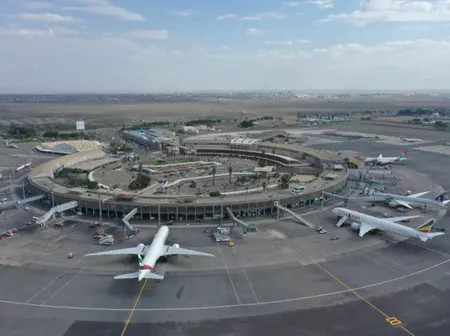Air traffic control authorities worldwide have long struggled with outdated messaging systems that are costly, rigid, and unable to keep up with modern aviation demands.
For Kenya, which serves as a major regional hub through Jomo Kenyatta International Airport (JKIA), these limitations have direct implications on efficiency and safety.
Technology provider Société Internationale de Télécommunication Aéronautique (SITA) has unveiled ATC Bridge, a cloud-based digital platform designed to replace legacy systems with a secure, scalable, and cost-effective solution.
The system promises to simplify air traffic communications, improve cross-border coordination, and reduce operational costs for both mature and emerging aviation markets.
According to SITA, the platform will serve Civil Aviation Authorities, Air Navigation Service Providers (ANSPs), and regulators that rely on fast and dependable communication across the International Civil Aviation Organization (ICAO) ATS Messaging Handling System (AMHS).
By eliminating expensive hardware, software licensing, and complex IT maintenance, ATC Bridge offers aviation stakeholders a subscription-based model that adapts to their needs.
“Across the industry, air navigation service providers are being asked to do more with less: handle growing traffic volumes and modernize systems, often with tight budgets,” said Martin Smillie, Senior Vice President of Communications and Data Exchange at SITA.
“Legacy communication systems make that harder by being expensive, rigid, and complex to maintain. SITA ATC Bridge changes that. By moving to a secure, cloud-based platform, we’re giving aviation authorities the flexibility, speed, and resilience they need to collaborate across borders and keep pace with the demands of modern air traffic management.”
For Kenya and the wider East African region, the innovation comes at a time when air travel is steadily growing, with JKIA positioning itself as a leading hub for both passenger and cargo traffic. The platform enables the secure exchange of large volumes of data in real time, allowing aviation authorities to collaborate more efficiently across borders and respond quickly to operational needs.
The system also emphasizes security, featuring encryption, strict access controls, anti-virus protection, and automatic updates to remain compliant with international standards set by ICAO and International Air Transport Association (IATA). This ensures that operations not only remain efficient but also meet the highest safety protocols.
For everyday airport users, the new platform could have very practical benefits. By cutting delays caused by communication breakdowns, travelers at JKIA and Wilson Airport could enjoy smoother flight schedules and more reliable connections to regional and international destinations.
Improved coordination across borders also means fewer disruptions for passengers on regional routes such as Nairobi–Kigali, Nairobi–Dar es Salaam, or Nairobi–Johannesburg. For long-haul travelers, it enhances the overall safety and efficiency of flights to Dubai, London, and other global hubs.
In addition, the cost savings for aviation service providers may eventually trickle down to airlines, helping them keep ticket prices competitive in a market where affordability remains a top concern for Kenyan travelers.
Industry experts say the introduction of ATC Bridge could ease regional integration and strengthen Nairobi’s standing as a key aviation center in Africa.
By reducing the costs of maintaining older systems while improving efficiency, the technology may also help airlines operating in the region manage expenses in an industry where margins remain tight.
ATC Bridge, which is subject to a pending patent, is being positioned as a future-proof solution for air traffic management, tailored for both advanced markets and fast-growing aviation economies like Kenya.

Leave a Reply